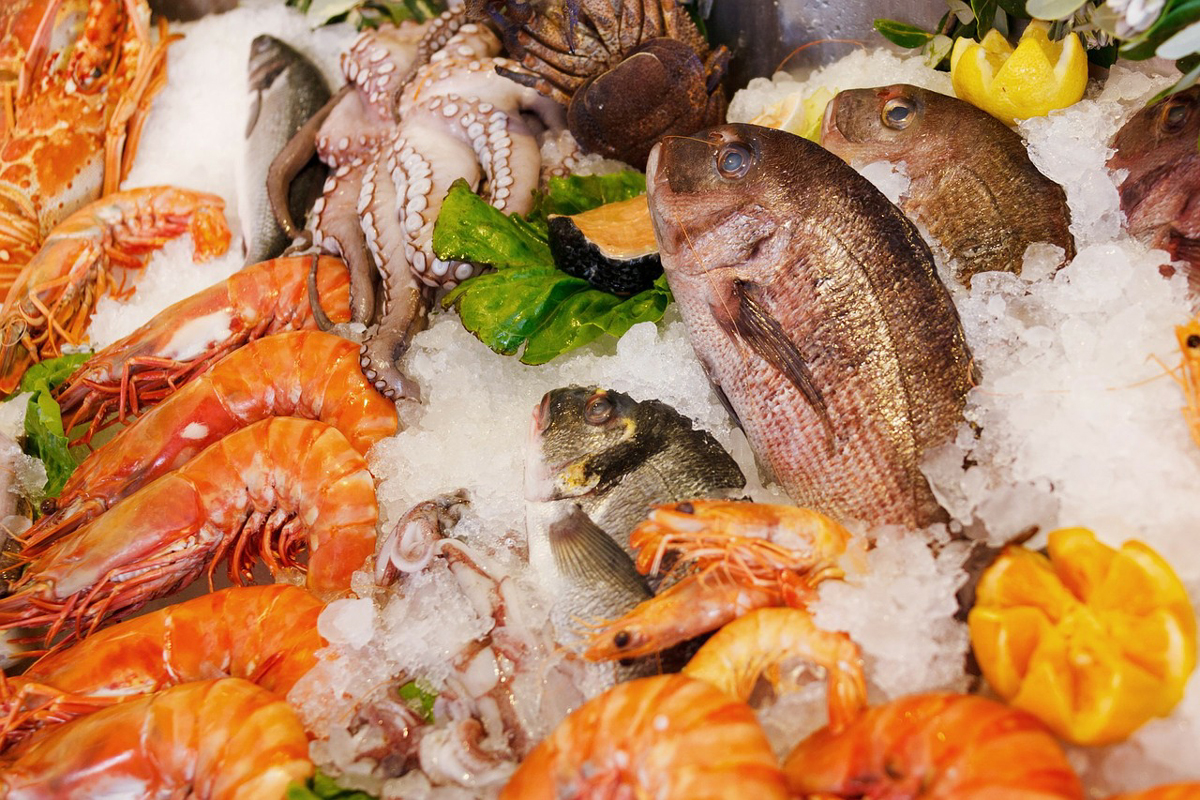Not surprisingly, seafood should not be treated in the same way as meats and poultry. In order to keep seafood fresh one must place special emphasis on the safe and careful handling of it. Fish and shellfish dwell in a very moist environment indeed, often extremely cold, sometimes just above freezing. As a result of this fresh seafood should be kept very cold and moist while being handled with care; improper storage or rough handling can do a great deal of harm to seafood products. Mishandling of fresh fish can cause bruising and ruptured blood vessels; bruised fish will have a strong “fishy” odor and taste and the process of oxidation will speed up, which will lead to the fish becoming rancid.
In order to maintain seafood at its freshest it should be put into the freezer as soon as possible after purchase. Try to keep it frozen as close to minus 20 degrees Fahrenheit as possible, it will remain in optimum condition for up to six months this way. Fish should be defrosted in the refrigerator overnight, this way moisture loss is kept at a minimum; a one pound package should defrost within twenty four hours. Bacteria on the surface of seafood will start to multiply rapidly if it is defrosted with warm water or at room temperature, cold water defrosting is preferable. One can also use a microwave for defrosting, but take care to avoid beginning the cooking process; always use the microwave at its lowest setting.
The storage life of seafood varies on the type and the way it is handled and stored. The following are some basic guidelines on storage methods and times:
- Fish should be used quickly, usually within one or two days.
- Live shellfish like mussels and oysters should be stored in a shallow dish covered with damp paper towels or cloths, not in an airtight container and never in water! Always scrub the shells before cooking or shucking.
- Oysters and clams in the shell will last seven to ten days, mussels will last two or three days, if any shells open during storage tap them; if they are alive they will close, discard them if they are dead.
- Squid, shrimp and shucked shellfish should be stored in a leak proof container or bag. Scallops and shrimp will remain fresh for up to three days, squid and shucked clams one or two days and freshly shucked oysters have a shelf life of between five and seven days.
- Live lobsters and crabs should be cooked on the day they are purchased; after cooking, whole lobsters and crabs should be stored in an airtight container and used within three days.
- Cooked lobster and crab meat can be stored in a sealed bag or container for three to four days.
Remember that when you keep seafood fresh, not only will you eat healthier and get more enjoyment out of your foods, you’ll also save money by having less waste!
The Author:
Mark Gold has more than 27 years of experience in the Food and Beverage Industry. He has written numerous articles on foods and food preservation.
Photo. Public Domain Pictures
Source: Ab
